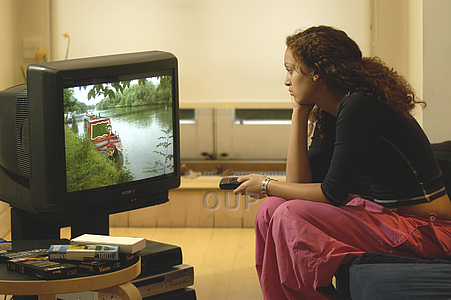 Vanessa Medina is an English teacher, freelance ELT consultant and writer. Here she explores using videos to teach different writing structures.
Vanessa Medina is an English teacher, freelance ELT consultant and writer. Here she explores using videos to teach different writing structures.
As teachers, we have all heard about the benefits of using new technologies such as computers and internet in the classroom. These aides are powerful tools because of the varied input that they provide students as they cater to different learning styles. However, if used through thoughtfully planned activities, they can also help our students develop critical thinking skills.
One thing to consider is that, in a writing course, input is mostly through written text in a textbook, and while these texts and activities help students develop most critical thinking skills, students respond better to more stimulating input. Through the use of video in a writing course, we can address students’ topics of interest in class and at the same time, students can deepen their understanding of certain writing structures or use the main ideas in video for different purposes through the use of their verbal, artistic, logical, and other abilities.
Depending on the type of essay, you will want to find videos that are suitable for analysis of the structure that you are teaching. With internet resources such as YouTube, you can find videos that are relevant and related to any given writing structure. For example, a global warming video could be used to study the structure of a cause-effect essay by asking the students to infer the main ideas in the video and share how they relate to the causes and effects of global warming; this could later be developed into a visual brainstorm for an essay. You could also use one of the PC vs. Mac ads to spark a discussion for a comparison essay. Since these ads target the weaknesses of PCs, students that use PC could help list advantages over Mac.
Additionally, a general rule of thumb is that the video should not exceed 10 minutes of duration; this will help students keep focused on the task. Also, don’t forget to introduce the video and give your students instructions as to what to look for.
Critical thinking is commonly defined in terms of six core skills: interpretation, analysis, evaluation, inference, explanation and self-regulation.What follows is a list of four of these skills with a suggested activity you can do with your students after you watch a video:
Analysis: Students can identify the different elements in a video and organize them into an outline for an essay.
Inference: Students can infer the main ideas in a video and develop a brainstorm for an essay on the topic.
Explanation: Students can explain, either visually or orally, the organization of the main ideas in a video.
Evaluation: Students can evaluate the ideas from a video to form their own opinions for an argumentative or persuasive essay.
These are simple activities that will enable you as a language teacher to add new stimuli in the presentation of writing objectives and that will aid in the development of students’ critical thinking.
Furthermore, by engaging students through mixed input and allowing them to express their diverse interests (by asking them to suggest videos or topics) and abilities (by offering different activity options such as pair or group discussions, developing visuals to explain concepts, or thinking on their own what a given video is communicating to them), you will find that your students become more creative in their tasks and achieve better outcomes.
Do you have any other suggestions to develop critical thinking skills through video?


Hi Venessa,
Some really useful and valid points raised here. On TES Teachers TV I use a video at the top entitled ‘Persuasive Writing’ with five short video clips providing a stimulus for pupils to employ a range of persuasive writing techniques… hope it helps : )
Where is the critique here? Surely there is more to critical thinking than weighing up the pros and cons of the Mac or PC? Using video to develop critical thinking skills has to involve thinking critically about how things are very selectively portrayed in the video – how an appearance has been carefully crafted so as to seduce the viewer into seeing something in one way rather than another. In general, critique challenges the terms of the debate – the way the debate has been set up. Somehow, in the analysis of critical thinking presented here the essence of critique disappears and we are left with the sort of uncritical, evaluative thinking that happy shoppers do every day.
[…] Vanessa Medina is an English teacher, freelance ELT consultant and writer. Here she explores using videos to teach different writing structures. As teachers, we have all heard about the benefits of… […]
Very energetic blog, I enjoyed that bit. Will there be a part 2?
good